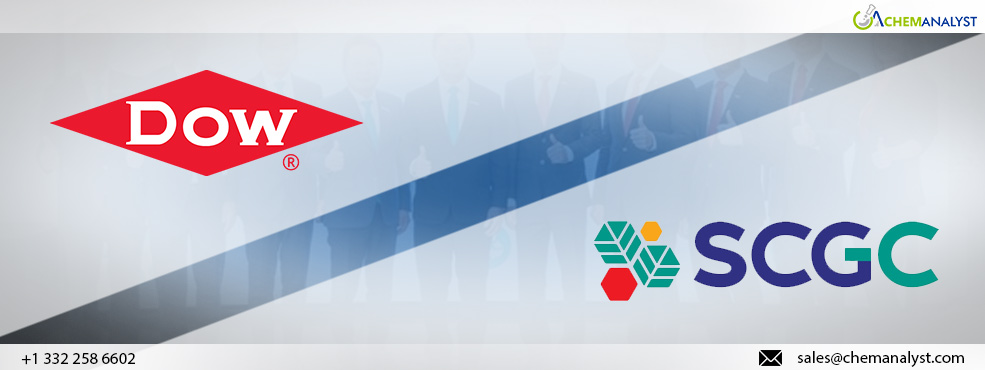Dow and SCGC Partner to Convert 200KTA Plastic Waste into Circular Products
- 17-May-2024 2:02 PM
- Journalist: Jai Sen
On May 16, 2024, Dow (NYSE: DOW) and SCG Chemicals (SCGC) revealed the signing of a pioneering memorandum of understanding (MOU) for a circularity partnership in the Asia Pacific region. Their goal is to convert 200KTA of plastic waste into circular products by 2030.
The partners aim to expedite technology advancements throughout the value chain, facilitating recycling via both mechanical recycling (MR) and advanced recycling (AR). Their objective is to transform a wider spectrum of plastic waste into high-value applications.
The early stages are projected to involve the creation of a value-driven partnership for post-consumer recycled materials (PCR) with existing suppliers, along with the advancement of technology solutions in waste sorting, MR, and AR in Thailand. These phases are designed to foster a resilient materials ecosystem in Southeast Asia. This ecosystem will ultimately enhance plastic waste collection, recycling, and management, thus expediting plastic circularity.
The parties foresee that future stages of the partnership will encompass the procurement of plastic waste feedstocks in Southeast Asia, with potential expansion into other areas of the region such as China, Korea, Japan, Taiwan, Australia, and New Zealand.
"Asia stands as one of the primary sources of convertible plastic waste. Our aim is to revolutionize the current waste management practices in the region and establish a novel model that prioritizes, sources, and repurposes plastic waste. Through our partnership with SCGC, both companies will play pivotal roles in promoting greater circularity in the region, leveraging our complementary portfolios, research and development capabilities, and technology licenses," stated Bambang Candra, APAC Commercial Vice President of Packaging & Specialty Plastics at Dow. "Coupled with our existing technical proficiency in manufacturing high-performance resins, our customers will benefit from enhanced value through optimized total cost of use, increased availability, and improved quality of plastic waste within the materials ecosystem."
"This partnership between SCGC and Dow signifies a significant milestone as two leading entities in sustainable plastics unite to propel and advance the circular plastic ecosystem efficiently across the value chain in the Asia Pacific region," stated Sakchai Patiparnpreechavud, CEO and President of SCGC. " SCGC is positioned to utilize its proficiency in green polymer and compound technology to improve the performance of plastic resins. This endeavor aims to reinstate value to used plastics in line with circular economy principles through both mechanical and advanced recycling processes while retaining properties that meet customer requirements. This initiative will bolster business prospects and cater to the escalating demand for high-quality PCR across global markets, spanning from packaging to electrical appliances, thereby embodying SCGC's commitment to a Low Waste, Low Carbon approach."
"Dow Thailand is delighted to initiate a fresh chapter in our 57-year legacy in the country with a groundbreaking circular economy partnership alongside our esteemed collaborator, SCGC. With 37 years of mutual dedication to excellence and sustainability, SCGC is the perfect ally to explore fresh joint business prospects. Together, we aspire to elevate the value we provide to our customers and play a part in fostering a sustainable future for the region," remarked Chatchai Luanpolcharoenchai, President of Dow Thailand.
The collaboration aligns with Dow's "Transform the Waste" objective, which seeks to convert plastic waste and other alternative feedstocks into commercialized circular and renewable solutions at a rate of 3 million metric tons annually by 2030. Additionally, the partnership aligns with SCGC's sustainability objectives outlined in the "Low Waste, Low Carbon" initiative, aiming for carbon neutrality by 2050. SCGC also aims to decrease greenhouse gas emissions by 20% and bolster its production capacity for its green polymer portfolio, with a sales target of 1 million tons per year by 2030.



